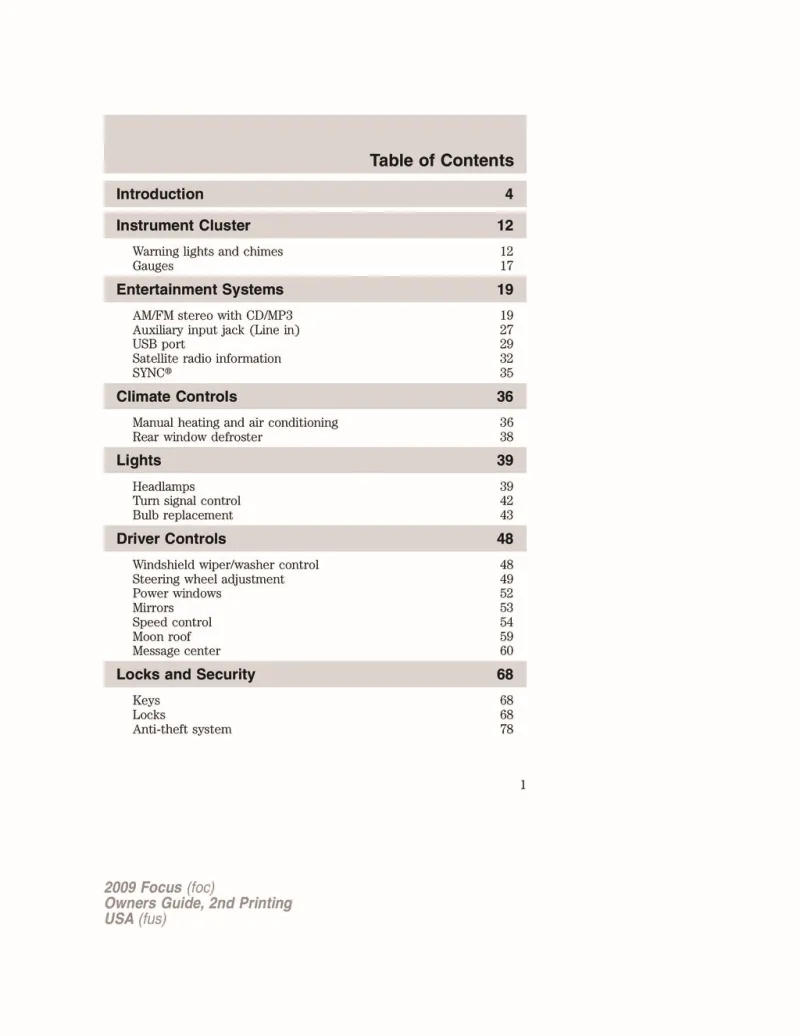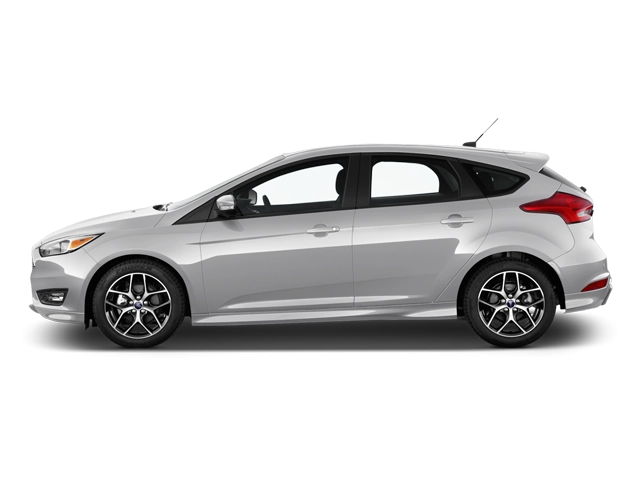2009 Ford Focus Owner's Manual

Table of Contents
2009 Ford Focus Overview
Introduction
The 2009 Ford Focus stands as a compact car that deftly combines practicality, efficiency, and style. With a design that leans toward youthful exuberance, this model has been optimized for both city driving and long-distance travel. Known for its reliability and fuel efficiency, the 2009 Focus captures the essence of a modern vehicle while catering to the needs of everyday drivers.
Powertrains
The 2009 Focus comes equipped with two engine options to suit varying performance preferences. The standard configuration features a 2.0-liter four-cylinder engine that delivers a spirited 140 horsepower, striking a balance between power and fuel efficiency. For those seeking enhanced performance, the SEL model offers an optional 2.0-liter Duratec engine, which provides improved throttle response. Both engines are mated to a five-speed manual or an optional four-speed automatic transmission, ensuring smooth gear transitions and responsive handling.
Trims
Features
Inside, the 2009 Ford Focus boasts an array of modern features aimed at enhancing driver and passenger comfort. Standard amenities include a four-speaker audio system, air conditioning, and an available navigation system for those who rely on technology to navigate. Safety features like front and side airbags, anti-lock brakes, and electronic stability control come standard or as options, echoing Ford’s commitment to passenger safety.
Owner's Manual
For new owners, the comprehensive owner's manual serves as an invaluable resource. It offers essential information on maintenance schedules, troubleshooting tips, and operation of vehicle systems. Whether you are learning about recommended fuel types or exploring the various features available, the owner’s manual ensures you maximize your experience with your 2009 Ford Focus.
User manual download
The Ford Focus owner manual for the 2009 model year is to be found in PDF downloadable format on this page. The owner manual for the model year 2009 is free and in English, but the repair manuals are usually not easy to get and may cost more.
Manual Questions
Fill the form below and someone will help you!

